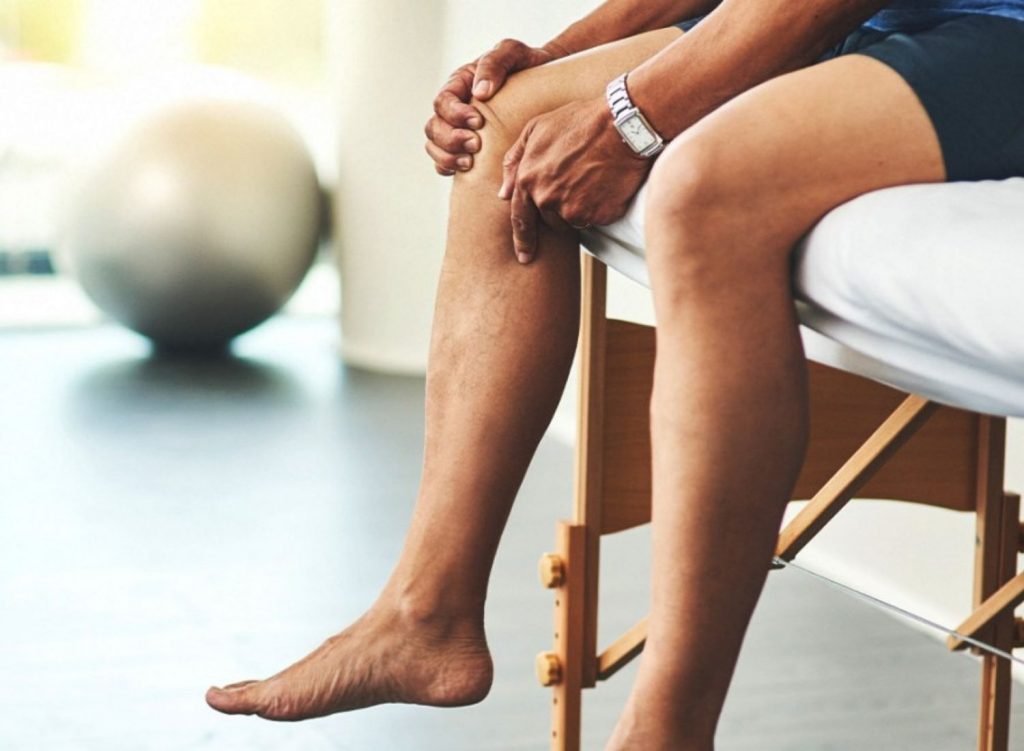The knee is a joint that does the work of locking and unlocking while walking. It is a very important joint as it has to bear the whole body’s weight of a person. Continuous flexion and extension of this joint happen when we are walking. But this walking activity might become strenuous, leading to knee joint pain. But there are a few stretching yoga poses to manage knee pain that you can try, which we will learn further in this article.
Physiology Of The Knee
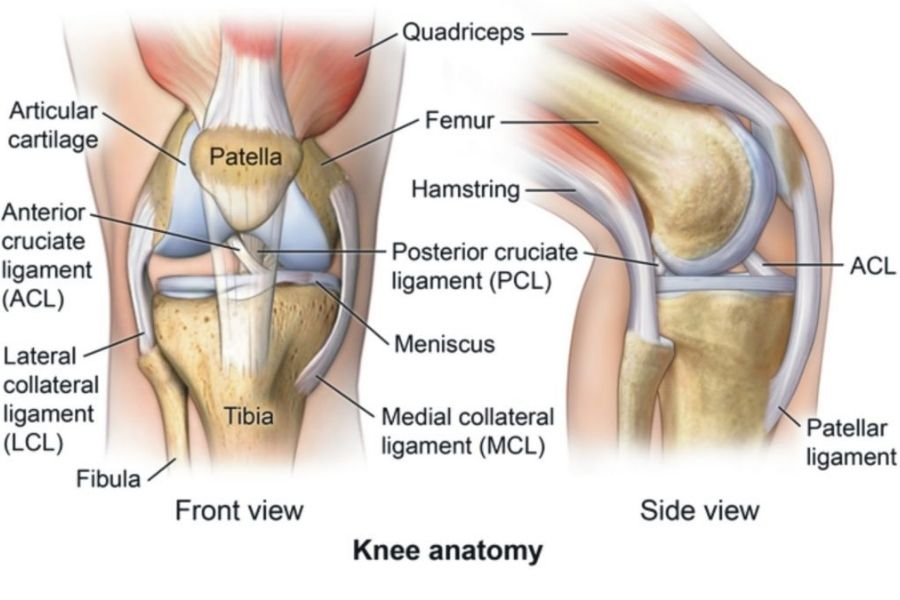
Let us have a look at the anatomy of the knee to understand its physiology. The knee is made up of 3 joints, femur at the top, tibia at the bottom, and patella in the front. Patella is known as a knee cap by a layman. There is a fluid known as synovial fluid, which flows in between the two bones’ joints. Ligaments, tendons, and muscles surround the bones.
How Does One Get Pain In The Knees?

The knee joint degeneration or its overuse occurs due to excessive walking (for weight loss or to treat some disorder on a recommendation). We follow it without thinking about the consequences that lead to knee pain. This was a pain due to joints. There is one more reason for the pain. Overworking worsens the condition, but sometimes not working is also not good. Sitting for long hours leads to adaptive shortening of the muscles, especially in the thigh muscles which leads to knee pain. Therefore, overworking or underworking should not happen. Some people say knee pain is genetic.
Knee pain is seen in females as well as males. The earliest at the age of late ’30s can be the occurrence of knee pain. Responsible factors can be food habits, no proper calcium intake, or less calcium absorption due to wrong food habits. Sometimes, people think this is a very early age to start with calcium supplements, leading to pain in the knee or some other joint. You cannot avoid the pain but can prolong it at least for a few months or years by taking care of your knees, physically, along with the right food intake.
Role Of Weight In Knee Pain
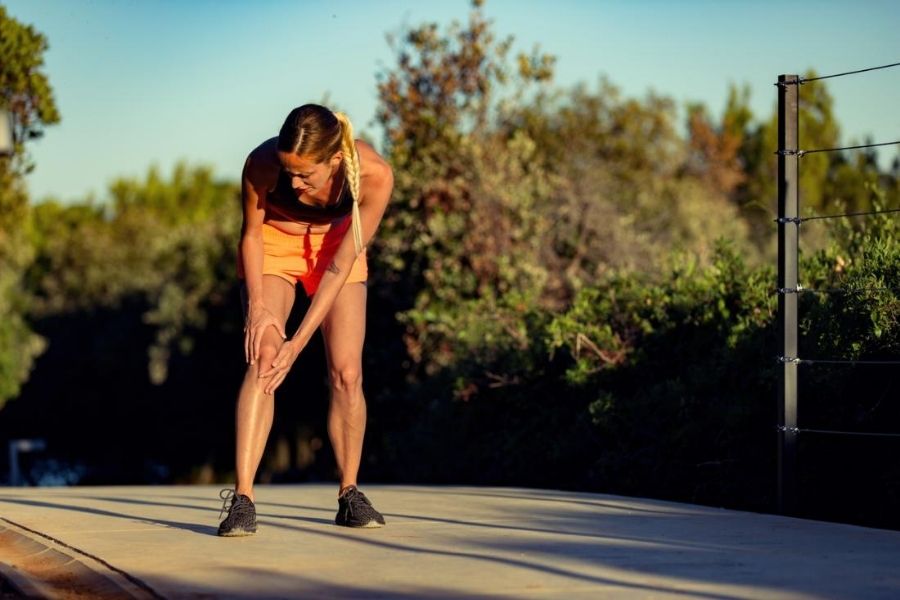
Weight plays a significant role in knee pain. An overweight person is more prone to it than an average-weight person. The wrong walking method or bad sitting habits may also lead to knee pain as the alignment of the body changes. Many people sit with one leg over the other while watching television or reading; they sit on the floor with their legs spread in front. Many times, people place their ankles over one another while sitting on the chair. This also changes the alignment of the legs, leading to knee pain. There are so many reasons for knee pain, but the solution is one.
If I say Yoga, everyone will say who can spend an hour from the busy schedule. The most common question would be, ‘How can one do Yoga with knee pain?’ I am not saying you have to do an hour-long Yoga session. These few tips can be done anytime, anywhere, no matter if the stomach is empty or full, or at the late hours of the day, or if I have just got up from the bed. These are a few stretches that would help reduce the pain and strengthen the muscles around the legs for ease in walking.
Stretching Yoga Poses To Manage Knee Pain
1. Modified Virabhadrasana I (Stretching)

Place the heel of the right leg against the wall or you can do it on a yoga mat. Take the left leg as forward as you can. Keep your back straight. Stretch your hands in the air and hold for ten counts. Slowly take the right leg in front. Again place the heel of the left leg against the wall, and repeat the above instructions.
2. Modified Virabhadrasana II (Strengthening)
Place the heel of the right leg against the wall and take the left leg as forward as you can. Keep your back straight, hands on the waist, or above in the air. Now move your front leg up and down, and very mild movements of the leg behind are seen. Repeat on the other side. The leg which is behind should not bend in the knees.
3. Dandasana
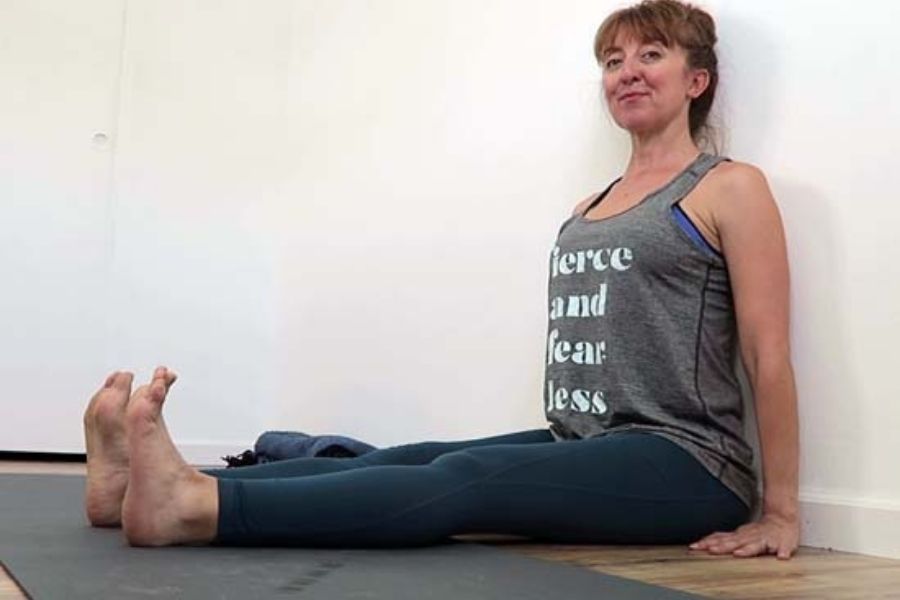
When you sit with the entire back against the wall, the lower back also touches it. There should be no space between the body and the wall. Spread your legs in front of you. Now do ankle movements, taking the toes towards you as much as possible, hold for five counts, and move toes away from you as much as possible; hold for five counts. Now do the rotation of the ankle clockwise and anticlockwise, five times each. It helps strengthen the buttock muscles by flexing the hip joint and strengthening the ankle muscles by doing these movements.
4. Heel Stretch
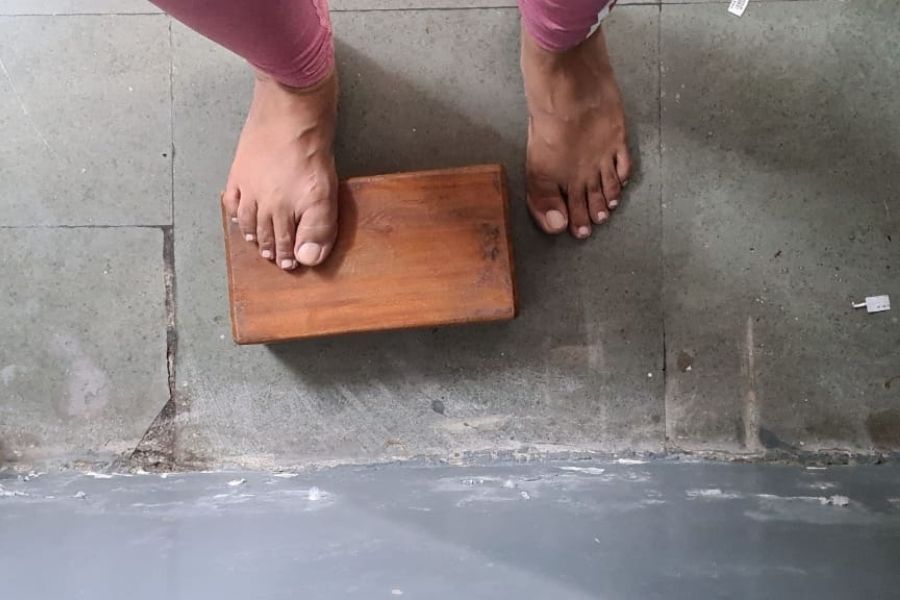
This is very effective in managing knee pain and any part of the leg. This stretches the entire calf muscles and back of the knee. For this, you require a brick (you can use regular construction brick also). Place the brick about a foot away from the wall; one leg beside the brick and the toes on the brick, heel touching the floor, knee caps tight, back straight looking in front. Hold for ten counts, remove the leg from the brick, place it at the brick side and the other leg on the brick, and hold for ten counts.
Take the support of the wall in front. You may feel pain for the first few days, but it is very effective later on. It helps relieve knee pain. You can practice this 2 to 3 times a day.
All the exercises given above are useful not only for knee pain but also to keep the legs healthy. By doing this, you can keep the pain away for a longer time, and along with this, following a healthy lifestyle and keeping your weight under control, you will never have to worry about the pain and keep yourself moving for your entire life.

